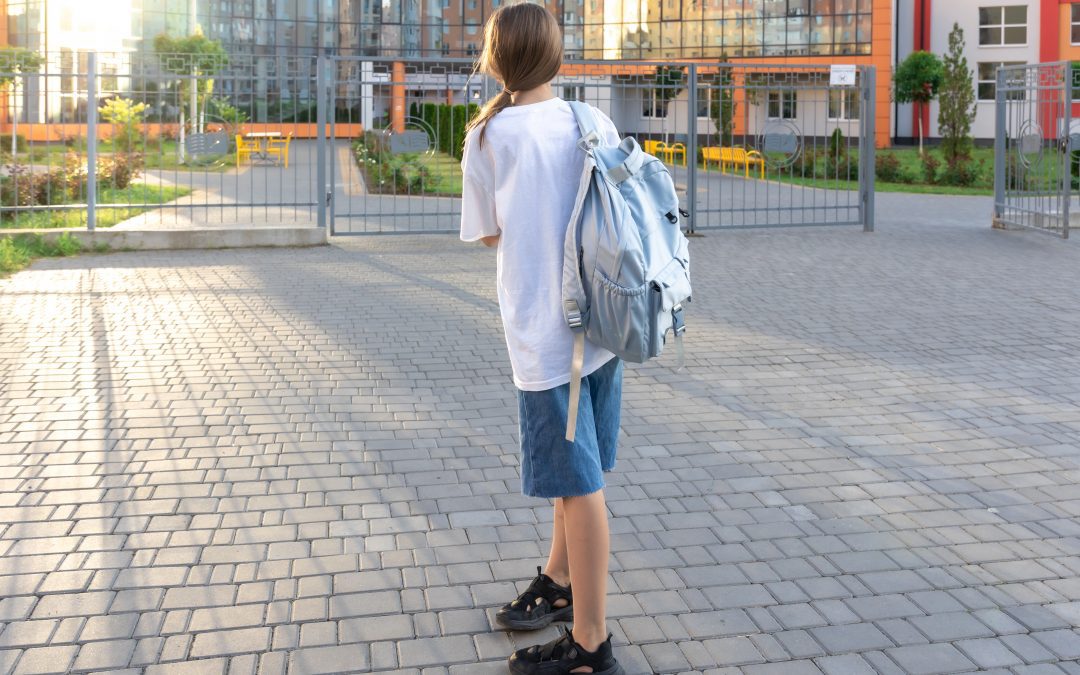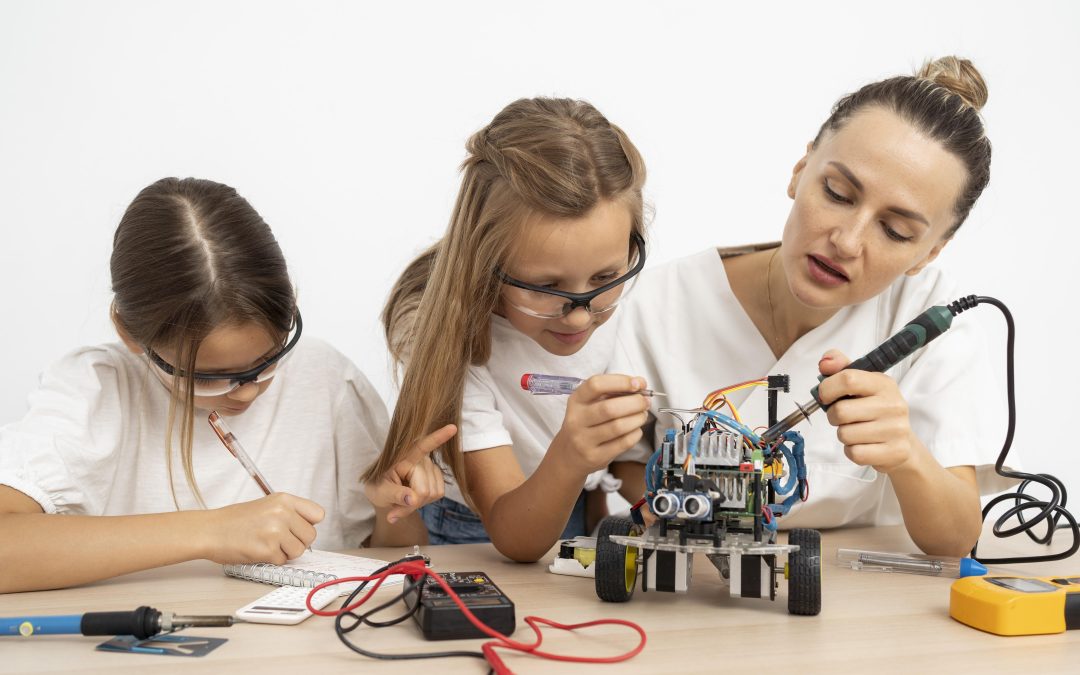Gone are the days when PSLE scores were the only gateway to secondary education in Singapore. In 2023, a staggering 4,400 Primary 6 students secured their secondary school places through DSA-Sec before sitting for their PSLE. “The landscape of education is evolving, and so should our admission processes,” remarks Mrs. Sarah Tan, a veteran educator with 25 years of experience. With approximately 20% of Secondary 1 places now filled through DSA, this alternative pathway is rapidly gaining traction among students and parents alike. But is DSA truly becoming as significant as PSLE in shaping our children’s educational journey?

The Evolution of Secondary School Admissions in Singapore
The journey from PSLE’s dominance to DSA’s emergence reflects Singapore’s shifting educational philosophy. Introduced in 2004, DSA was born from the vision of then-Prime Minister Goh Chok Tong, who emphasized the need for “multiple paths to success.” Initially met with skepticism, DSA has grown exponentially – from just 2,500 successful applications in 2012 to over 4,400 in 2023.
“When we first introduced DSA, many parents were hesitant. Today, it’s become a viable alternative that recognizes diverse talents,” shares Dr. Lee, a well-known educationist. The current landscape sees both pathways coexisting, with PSLE maintaining its position as the primary admission route while DSA offers a parallel path for students with specific talents, strengths, and interests.
Understanding the Two Pathways
The PSLE Route
The Primary School Leaving Examination remains Singapore’s traditional benchmark for secondary school placement. Under the Achievement Level (AL) scoring system introduced in 2021, students receive scores from AL1 to AL8 for each subject, with lower numbers indicating better performance. “The new scoring system aims to reduce excessive competition while maintaining standards,” explains Jennifer Lim who is a student counselor.
Students’ final Primary School Leaving Examination scores, ranging from 4 to 32, determine their secondary school options through a computerized posting system that considers both merit and choice. Schools’ cut-off points from previous years serve as useful references for students and parents during the school selection process.
The DSA (Direct School Admission) Route
Direct School Admission offers a remarkably different approach. “DSA isn’t just about sports or arts anymore,” notes Mr. David, a secondary school teacher. “We’re looking at leadership qualities, entrepreneurial spirit, and even STEM capabilities.”
The scheme encompasses diverse talent areas including:
- Sports and Games (from badminton to wushu)
- Visual, Literary, and Performing Arts
- Leadership and Uniformed Groups
- STEM-related talents
- Languages and Humanities
Each school conducts its unique selection process, which might include:
- Live auditions or performances
- Portfolio submissions
- Interview sessions
- Aptitude tests
- Trial sessions or camps
Comparing PSLE and DSA: A Student’s Perspective
“I felt like I could finally breathe when I got my DSA offer,” shares Mei Ling, now a Secondary 2 student. “While my friends were stressing over every mark in their prelims, I could focus on developing my passion for dance.”
Advantages of DSA
The early confirmation of a secondary school place – typically by September – provides immense psychological relief. Sarah’s mother explains, “It’s liberating. My daughter could approach PSLE with less anxiety, knowing she already had a place in her dream school.”
DSA’s recognition of non-academic talents has opened doors for students who might otherwise be overlooked. Take James, a national youth footballer: “My PSLE scores might not have gotten me into my current school, but my sports achievements did. Now I’m excelling both on the field and in class.”
Challenges of DSA
However, the path isn’t always smooth. “The selection process was more intense than I expected,” admits Ryan, who went through three rounds of interviews and skill tests for his school’s Science and Technology programme. Some students face grueling schedules during the DSA period, juggling school work with preparation for trials and interviews.
“The biggest challenge? Once you accept a DSA offer, there’s no turning back,” cautions Mrs. Lee, a primary school counselor. “I’ve seen students struggle because they can’t transfer to another school, even if they find the environment unsuitable.”
Making the Right Choice: PSLE, DSA, or Both?
Educational consultant Dr. Tan emphasizes, “It’s not about choosing between PSLE and DSA – it’s about leveraging both opportunities strategically.” He recommends parents consider these key factors:
- Child’s genuine interests and sustained passion
- Long-term commitment to the chosen talent area
- School culture and programmes alignment
- Realistic assessment of chances in both pathways
Timeline management is crucial. “Start early,” advises Mrs. Wong, whose daughter successfully secured a DSA place through music and leadership. “We began preparing her portfolio in Primary four and five, which gave us ample time to explore options without rushing.”
Impact on Students’ Well-being and Development
Recent studies reveal interesting patterns in student well-being across different admission pathways. “DSA students often report higher levels of school satisfaction,” notes researcher Dr. Amanda Lim. “They tend to feel more valued for their unique abilities.”
However, the impact varies significantly. Some DSA students thrive under the specialized attention, while others feel pressured to consistently perform in their talent areas. “It’s a double-edged sword,” reflects basketball coach Mr. Chan. “The recognition is great, but the expectations can be overwhelming.”
The long-term benefits often extend beyond academics. DSA students frequently develop strong leadership skills and resilience through their specialized programs. “These students tend to have clearer career directions earlier,” observes career counselor Ms. Sarah Teo. “Their exposure to specific fields helps them make more informed choices about their future.”
Conclusion
Singapore’s education system has evolved significantly since the 1987 report recommending more latitude in school admissions. Today, the Direct School Admission (DSA) scheme allows students to use their talents in areas beyond academics, making the transition from primary to secondary education more dynamic and inclusive. With 148 secondary schools involved in DSA-Sec, students have unprecedented opportunities to gain direct entry based on their special aptitudes or talents.
The Ministry of Education (MOE) has successfully created a pathway that suits every learner, where PSLE results are no longer the sole criterion for admission. The DSA programme, since its inception, has transformed how certain secondary schools based their selection process, benefitting students who might excel beyond traditional academic metrics.
As veteran educator Dr. Sarah Tan notes, “Whether through PSLE or DSA, what matters is finding a school for your child that nurtures their potential.” With the high school of mathematics and other specialized institutions offering diverse opportunities, students now have a higher chance of benefitting from an education that aligns with their strengths.
The future looks promising as young in the arts, sports, leadership, and various other domains continue to find their paths through this dual-track system. As we move forward, both pathways will remain important, ensuring that Singapore’s education system truly serves every student’s potential and aspirations.
Remember, school preferences and choices should ultimately align with your child’s strengths and long-term goals. Whether you try the DSA route or sit for the primary school examinations as your main admission criterion, success lies in choosing the path that best suits your child’s unique talents and aspirations.
Frequently Asked Questions
What makes the Direct School Admission (DSA) pathway different from traditional PSLE admission?
DSA evaluates students based on specific talents, while PSLE focuses on academic performance.
How important is PSLE in the transition to secondary school now?
While still significant, PSLE is no longer the only pathway, with DSA offering an alternative route.
What percentage of Secondary 1 places do schools based on their talent areas offer?
Up to 20% of places can be allocated through the DSA scheme.
How does the DSA-Sec portal facilitate applications?
The portal centralizes applications, allowing students to apply to multiple schools efficiently.
What role does the Ministry of Education play in the DSA programme?
MOE oversees the framework while allowing schools to set specific selection criteria.
How many secondary schools involved this year participate in DSA?
141 of the 148 secondary schools offer DSA places.
What special considerations does the School of Science and Technology use?
They focus on STEM aptitude through specialized tests and project work.
How does the School of Mathematics and Science evaluate candidates?
They assess mathematical ability, scientific thinking, and innovation potential.
What is the duration of the programme for application period?
The main DSA exercise typically runs from May to September.
How do posting groups work for students who secure admission into secondary schools?
DSA acceptances are processed before regular PSLE posting groups.
What talents in areas are recognized under the scheme allows students to apply?
These include diverse areas such as sports, arts, leadership, STEM, and specific academic subjects.
How can parents on strategising for DSA improve their child’s chances?
Early preparation and matching talents to suitable schools are key strategies.
Is it mandatory to submit school applications personally at school during DSA-Sec?
Most applications are now online, but some schools require in-person components.
What happens if a student’s PSLE score differs significantly from expectations after accepting DSA?
The DSA acceptance remains binding regardless of PSLE results.
How do different schools have different selection processes?
Each school designs unique assessments aligned with their programs and focus areas.
What is the benefit of visit the schools during the selection process?
It helps understand school culture and program requirements firsthand.
How does the School of the Arts differ in its admission approach?
SOTA emphasizes artistic talent through auditions and portfolio reviews.
What determines if DSA-Sec is an appropriate pathway for a student?
Sustained interest, talent development, and long-term commitment are key factors.
How do secondary schools or junior colleges evaluate DSA applications differently?
There are different criteria for schools and JCs to admit a student. Secondary schools focus on potential, while JCs emphasize demonstrated achievements.
What support is offered by the school for students admitted through DSA?
Schools provide specialized programs, mentoring, and resources in talent areas.










